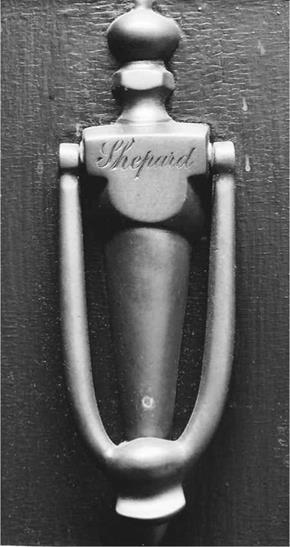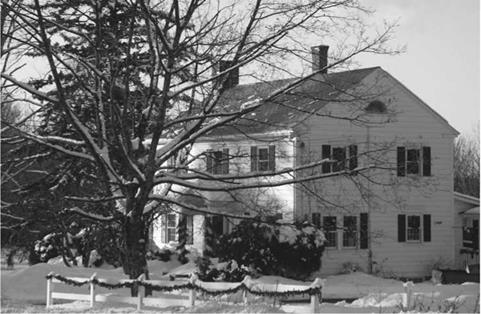RUSSIA RESPONDS
The very next day, 25 March, the Soviet Union overshadowed the Redstone test by launching into orbit and recovering by parachute the Korabl-Sputnik 5 spacecraft, which not only carried a small dog named Zvezdochka (“Little Star”) but also a fullsized space-suited mannequin cosmonaut which had been gleefully nicknamed “Ivan Ivanovich.”
Now suitably armed with a launch date for the first American astronaut, whose name had not yet been publicly revealed, the Soviet Union pressed ahead in an effort to completely upstage and diminish America’s space plans.
References
1. Telephone interview conducted by Colin Burgess with Edward C. Dittmer, 21 June 2005
2. The Airman: The Official Magazine of the U. S. Air Force, published by Defense Media Activity, USAF Office of Public Affairs, Washington, DC, issue April 1962
3. Burgess, Colin and Chris Dubbs, Animals in Space: From Research Rockets to the Space Shuttle, Springer-Praxis Publishing Ltd., Chichester, UK, 2007
4. Telephone interview conducted by Colin Burgess with Edward C. Dittmer, 21 June 2005
5. White, Stanley C., M. D., Richard S. Johnston and Gerard J. Pesman, Review of Biomedical Systems for MR-3 Flight, extract from Proceedings of a Conference on Results of the First U. S. Manned Suborbital Space Flight, combined NASA/National
Institutes of Health/National Academy of Sciences report, Washington, D. C., 6 June 1961
6. Stingely, Norman E., John D. Mosely, DVM, and Charles D. Wheelwright, Part 3, MR-2 Operations from Results of the Project Mercury Ballistic and Orbital Chimpanzee Flights, NASA SP-39, Washington, DC, 1963
7. Lodi News-Sentinel (California) newspaper article, “Chimpanzee May Go Into Orbit,” Tuesday, 28 January 1961, pg. 9
8. Telephone interview conducted by Colin Burgess with Edward C. Dittmer, 21 June 2005
9. The Dispatch (Lexington, NC) newspaper article “Chimp Given Rocket Ride Over Atlantic,” issue Tuesday, 31 January 1961, pg. 1
10. The Norwalk Hour (Connecticut) newspaper, article “Famous Space Chimpanzee Plays Ham After Thrilling Rescue, issue Friday, 3 February 1961, pg. 4
11. Ibid
12. Burgess, Colin and Chris Dubbs, Animals in Space: From Research Rockets to the Space Shuttle, Springer-Praxis Publishing Ltd., Chichester, UK, 2007
13. Swenson, Loyd S., James M. Grimwood and Charles C. Alexander, This New Ocean: A History of Project Mercury, NASA SP-4201, Washington, DC, 1989
14. Memorandum on Mercury-Redstone Booster Development Flight (MR-BD), Space Task Group, Patrick AFB, FL. 26 March 1961
15. The Schenectady Gazette (New York) newspaper article, “Space Man Eyed After Rocket Shot Succeeds,” issue Saturday, 25 March 1961, Pg. 1
3
NASA’s first space pilot “All of the first seven astronauts were real national heroes; not only to young people growing up in the late ’50s and early ’60s but to our folks as well.” Lifelong Derry, New Hampshire resident David Barka was circumspect in looking back over several decades and recalling those times. “I would be hard pressed to equate their special status to any national figure living today. Keep in mind that the enthusiasm over the first space flights was fueled by the Cold War with the Soviet Union that had school children hiding under their desks during periodic air raid drills. The Soviets had been first in space and the Space Race took on almost a life and death feel.”
David Barka grew up in the small farming and factory mill town which would one day gain an enviable reputation as America struggled to send a human into space for the first time. Named after Londonderry in Northern Ireland, Derry was first settled by Scottish-Irish immigrants in 1719. Some 50 miles from Boston, Massachusetts up Route 93 (now named the Alan B. Shepard Highway), the town has been home to several notable identities, including Matthew Thornton, a signer of the Declaration of Independence. For a time, the acclaimed poet Robert Lee Frost farmed and taught there while he wrote some of his epic works. In 1961, however, the town of Derry became forever identified with the supremely confident naval aviation officer, test pilot and NASA astronaut, Alan Bartlett Shepard, Jr., whose name is immortalized in our history books as America’s first man in space.
“At some point I learned that Alan Shepard, born and raised in Derry, had been chosen to be America’s first man in space,” Barka reflected. “His folks still lived in the same house about a mile from where I grew up. I was nine years old then, and I couldn’t have been more proud and excited. We were all aware of the great danger these men faced in going into space, especially Shepard, who would be first, and we were also aware that several rockets had blown up on the launch pads during test flights. On the day of the launch, Mrs. Blunt, who was the first-through-third-grade teacher at the Derry Village School, wheeled a television set into our classroom – something reserved only for special events – and we watched with great excitement the successful 15-minute flight of the first American in space.
|
The door knocker on the front of the house was part of the fittings when the house was first built, and is still in use today. (Photo: David & Debi Barka) |
“Alan Shepard returned to his home town about a year later to a huge parade and celebration. The Derry News said 100,000 people watched the parade, an enormous event for a town of six to seven thousand people. I still have pictures. My family owned the Barka Oil Company and my father proudly had pennants made which had ‘Spacetown U. S.A.’ under the company name.” [1]
|
A recent Christmas photo of the snow-covered Shepard house in East Derry. (Photo: Upper Village Hall, Derry) |












